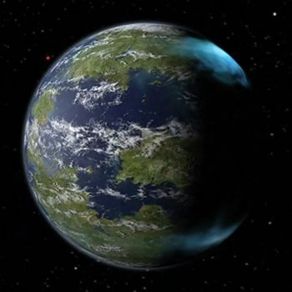
There have been vile races bred for combat, omnipotent races that use humankind as puppets, and even a bunch of cute little furry things. From The Original Series to The Animated Series, to The Next Generation, to Deep Space Nine, the Delta Quadrant and Voyager, to the early adventures of Enterprise, to the modern day films, Star Trek has gifted fans with unforgettable species after species as the five-year mission has turned into five decades of first contact. Star Trek may be the human adventure, but there have been countless non-human beings, critters, menaces, gods, and blobs that have been introduced in the Star Trek universe. Planet article at Wikipedia, the free encyclopedia.The crews of the various iterations of Star Trek boldly went where no one has gone before - and then boldly met a crap ton of alien species.Planet article at Memory Alpha, the wiki for canon Star Trek.For a list of planets see Planets or Planets and planetoids.Gas giant which radiates heat a failed star Worlds of the Federation classifications Class Turbulent, saturated with toxic chemicals and therionic radiation Tenuous, comprised of gaseous hydrogen and hydrogen compounds, radiates considerable heat Maybe temperate due to geothermal venting Oxygen/ argon, high concentration of carbon dioxideĮxtremely dense, carbon dioxide and sulfides Tenuous, comprised of gaseous hydrogen and hydrogen compounds, radiates some heat Variable pressure and composition, may contain water vapor Tenuous, comprised of gaseous hydrogen and hydrogen compounds, radiates heat

Star Charts classifications Classīarren and cratered metallic, iron- nickel- silicate The two sources have classes D, K and M in common, but otherwise assign classifications to conflicting letters. Two partially conflicting listings of planetary classification have been given by the 1989 book The Worlds of the Federation and the 2002 book Star Charts. The Klingons had a separate classification system, one of which is a Q'tahL class. ( ST reference: Star Charts ENT episode: " Strange New World")

For example, Class M (sharing meaning with the Vulcan designation Minshara class) is applied to planets that can support life without any special circumstances, such as Earth, Vulcan, or Cardassia. This system is used to determine the suitability of the planet for exploration, colonization, and scientific research.Įach class of planet is assigned a letter in the alphabet based on its suitability. The Federation classified planets it cataloged based on criteria such as atmospheric composition, surface temperature, and conditions, the size of the body, and the presence of animal and plant life.


 0 kommentar(er)
0 kommentar(er)
